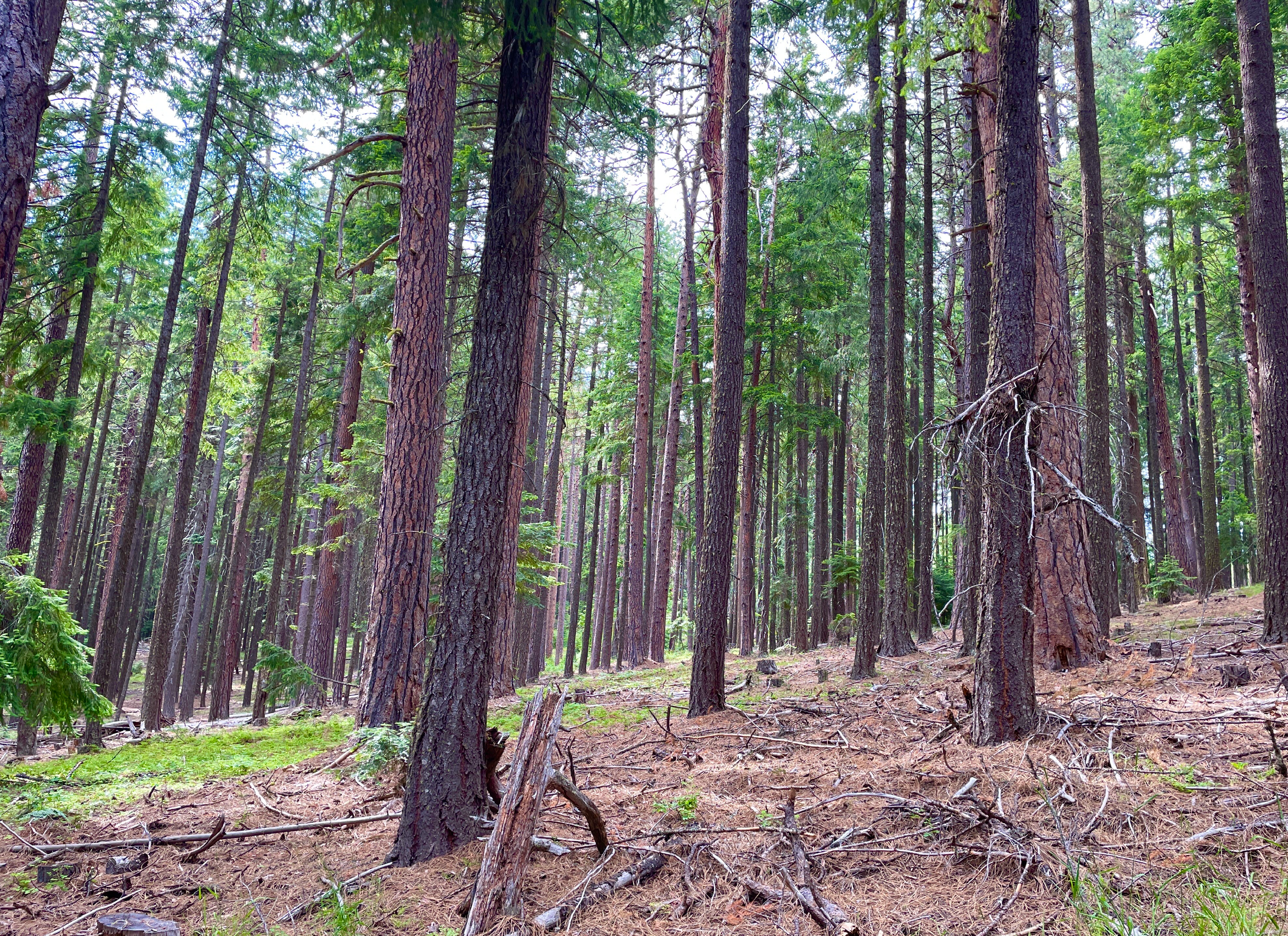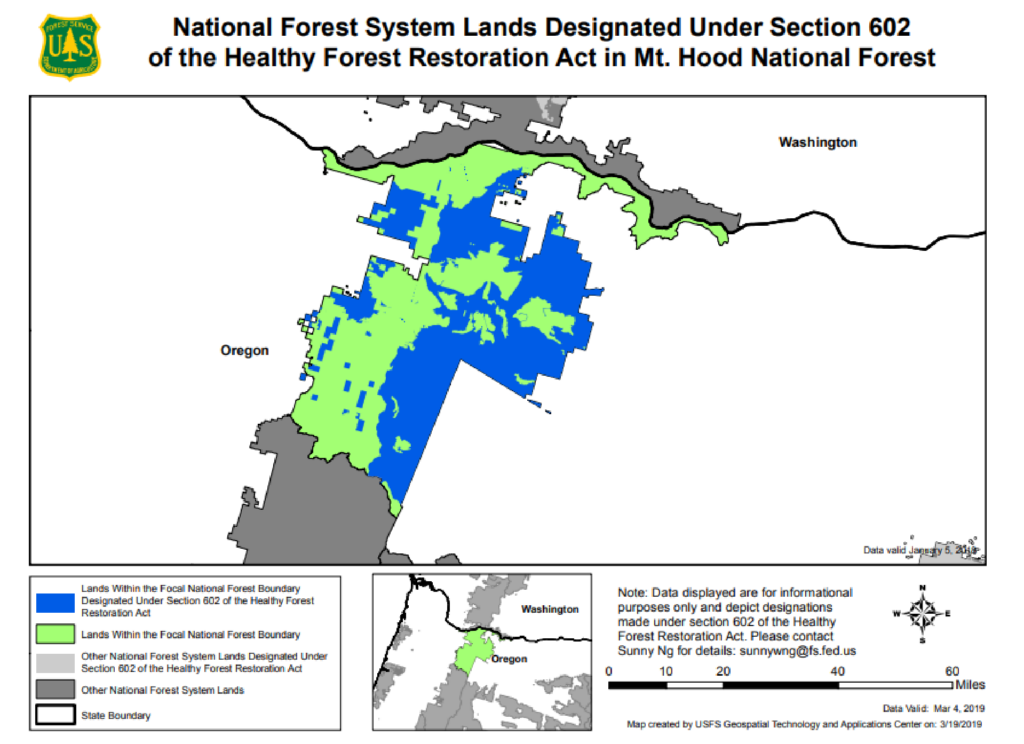Minimal Environmental Analysis Trending in “Mt. Hood”

Hello! I’m Jordan, and as Bark’s new Forest Watch Coordinator, I’m digging into the history of management for the area known as “Mt. Hood National Forest”* and working to understand current and future trends. The term “Categorial Exclusion” has become more familiar in recent years. Here is a bit about what this means for the forests, waters, and wildlife that mean so much to our communities.
A Categorical Exclusion (CE) is an action that a federal agency believes will not significantly affect the human environment and for which neither an environmental assessment nor an environmental impact statement is normally required. For the Forest Service, this has applied to actions like repairing a roof or mowing the lawn around a district office. In recent years, however, new types of CEs are larger in scale and can include commercial timber extraction, such as in Insect and Disease CEs.
On April 16th, 2019, the Forest Service Chief designated 580,048 acres of “Mt. Hood” as being at risk of substantial tree mortality over the next 15 years due to insects and disease (seen below in blue).

Much of this acreage includes dry, east-side forest ecosystems altered by over a century of Euro-American settler industry and the logging of large, fire-resistant trees. Indigenous communities, who actively managed the landscape with fire, were forcibly removed and kept from continuing this practice, while wildfires ignited by lightning were actively suppressed.
Without the beneficial thinning effect of regularly recurring fire, these forests can become more susceptible to outbreaks of insects like bark beetle, diseases like dwarf mistletoe, and high-intensity wildfires. In response, Congress gave the Forest Service authority to use an Insect and Disease Categorical Exclusion. From the Forest Service’s perspective, these CEs are seen as a “tool” that allows them to complete projects with higher efficiency and fewer resources.
These CEs come with some requirements, including (but not all):
- The project cannot exceed 3,000 acres.
- The project cannot build new permanent roads but can repair existing roads and build new “temporary” roads.
- The best available scientific information must be considered in order to maintain or restore ecological integrity.
- The project must maximize the retention of old growth and large trees.
CEs do not, however, require a full environmental assessment or public comment period.
Since 2019, three such Insect and Disease CEs have been planned on “Mt. Hood”: Pollywog, South Fivemile, and South Pen. The fourth, Gate Creek, is currently being planned and accepting public comments until March 8th.
We appreciate the Mt. Hood Forest Service for inviting public comment here, as they aren’t typically required for CEs, and we want to make the most of this opportunity.
With that, I want to share some initial research, questions and concerns on the project that I want to bring to your attention:
- The insects and diseases being highlighted are native to this region and help to create a diverse ecosystem. Are these projects prioritizing ecosystem resilience or simply safeguarding trees for future commercial extraction?
- The project documents mention conducting a preliminary analysis of potential environmental effects and concerns. What is involved in this hastened analysis, and can it correctly identify impacts to the environment? Finally,
- Will the proactive and beneficial use of fire be prioritized in the effort to manage insects and disease in dry, east side forests?
These are questions I’m currently seeking answers to, and how these projects will end up looking on the ground is unclear.
What is clear, however, is that the use of these CEs represents a new trend in the management of forests on “Mt. Hood.” And now, with a large portion of “Mt. Hood” being selected as a National Investment Landscape, we can expect proposals to follow the structure of CEs rather than including the fullest environmental analysis typically required by the National Environmental Policy Act.
Learn more about the Gate Insect and Disease project and get ready for an upcoming training on Public Comment writing.
Bark and our supporters are ready to respond to this new trend. We have a seat in the forest collaborative groups, which meet with Forest Service staff and provide input during planning. We’ll offer training for making public comments and participating in this decision process. And, of course, our volunteers will continue to contribute critical hours surveying these project areas and gathering valuable data. All of this is possible because of you.
For the Forest,
Jordan Latter, Forest Watch Coordinator
P.S. Follow along on our website as we update Gate Creek timber sale information.
P.P.S. We’re hiring! Check out our available roles – applications open until filled.
*We use quotation marks around uses of “Mt. Hood” and “Mt. Hood National Forest” to denote the settler colonialist origins of this region’s name.